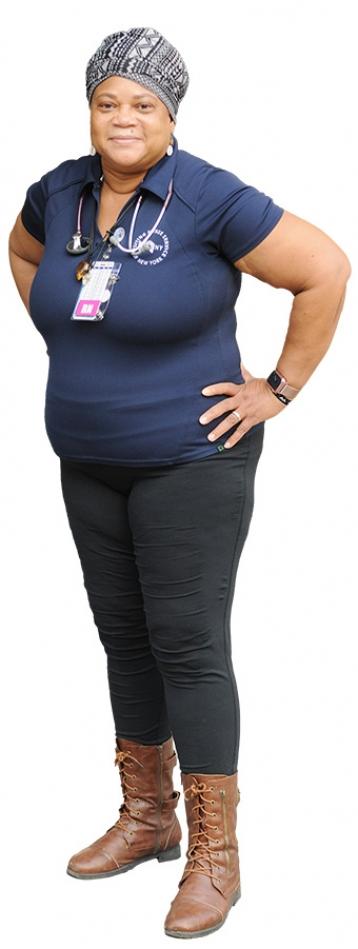Ruth Caballero is a Registered Nurse who works for the Visiting Nurse Service of New York, a certified home health agency whose employees are represented by the UFT. She provides home health care services in its adult care program.
What drew you to home care?
When I was at Methodist Hospital in Brooklyn, I saw that patients who accepted home care services didn’t come back to the hospital as frequently as patients who refused them. I wanted to be part of that.
What kind of services does the Visiting Nurse Service of New York provide?
VNS provides adult care, pediatric care, managed long-term care and hospice care.
Describe the patients in the adult care program.
Almost all my patients are newly released from the hospital. Many have surgical wounds needing follow-up care. Nurses are teachers so I provide education, mostly to adult patients and family members, about managing medications and diseases and about the symptoms of infection.
What is the agency’s goal?
Our goal is to keep everyone out of the hospital and to decrease the number of patients being discharged from us to a nursing home.
Explain the agency’s structure.
We work in teams of nurses, physical therapists, occupational therapists, speech therapists and social workers. Teams work in specific geographic areas in each borough. My team has about 10 nurses and covers upper Manhattan. Each nurse covers part of that area.
How long do you see patients?
I see them for no less than four weeks, no more than eight. The first week or two I may go twice a week, and then I taper down. If there’s a surgical wound, I may see a patient every day for 14 to 21 days before tapering.
How has your union made a difference during the pandemic?
During COVID’s first wave, nurses were very unhappy because originally VNS didn’t have enough personal protective equipment. We reached out to UFT Vice President Anne Goldman and that changed immediately. The UFT provided us with the necessary PPE so we could provide care to COVID positive patients daily and remain virus-free. Strong union support allows me to safely care for all my patients.
What medical needs do COVID patients have?
All COVID patients need to improve their respiratory and cardiac status, their endurance and their appetite.
How do you support them?
If the patient is not bed-bound, with the help of a caregiver I will get them to sit up in bed, maybe over the edge of the bed, and do deep breathing exercises to clear their lungs, which have been compromised. I will check their vital signs and endurance when sitting up, then later when standing and eventually, after walking. I encourage them to eat a high calorie, high protein, vitamin C-rich diet in small meals every few hours. Most have poor appetites; they can’t taste or smell, they’re weak and they can be dehydrated.
What is different because of COVID?
Anyone in the room has to wear a mask and maintain 6 feet of distance until I am doing a hands-on assessment, and the home must be well-ventilated. I tell patients I’m tested regularly and I’ve had the vaccine, and they seem relieved.
How do you feel about seeing COVID patients?
My heart goes out to them. I’m humbled and compassionate. These patients have probably been very fearful for their lives and they haven’t had contact with family members in the hospital. I consider them warriors — miracles walking among us — because they have survived this deadly virus and made it home.
What’s most rewarding about your job?
It’s most rewarding when I admit a COVID positive patient who converts to negative, or when a bed-bound patient gets up and about. This is not a field to get into if you don’t feel you’ve been called to it. This field can break your heart.
— As told to reporter Suzanne Popadin
